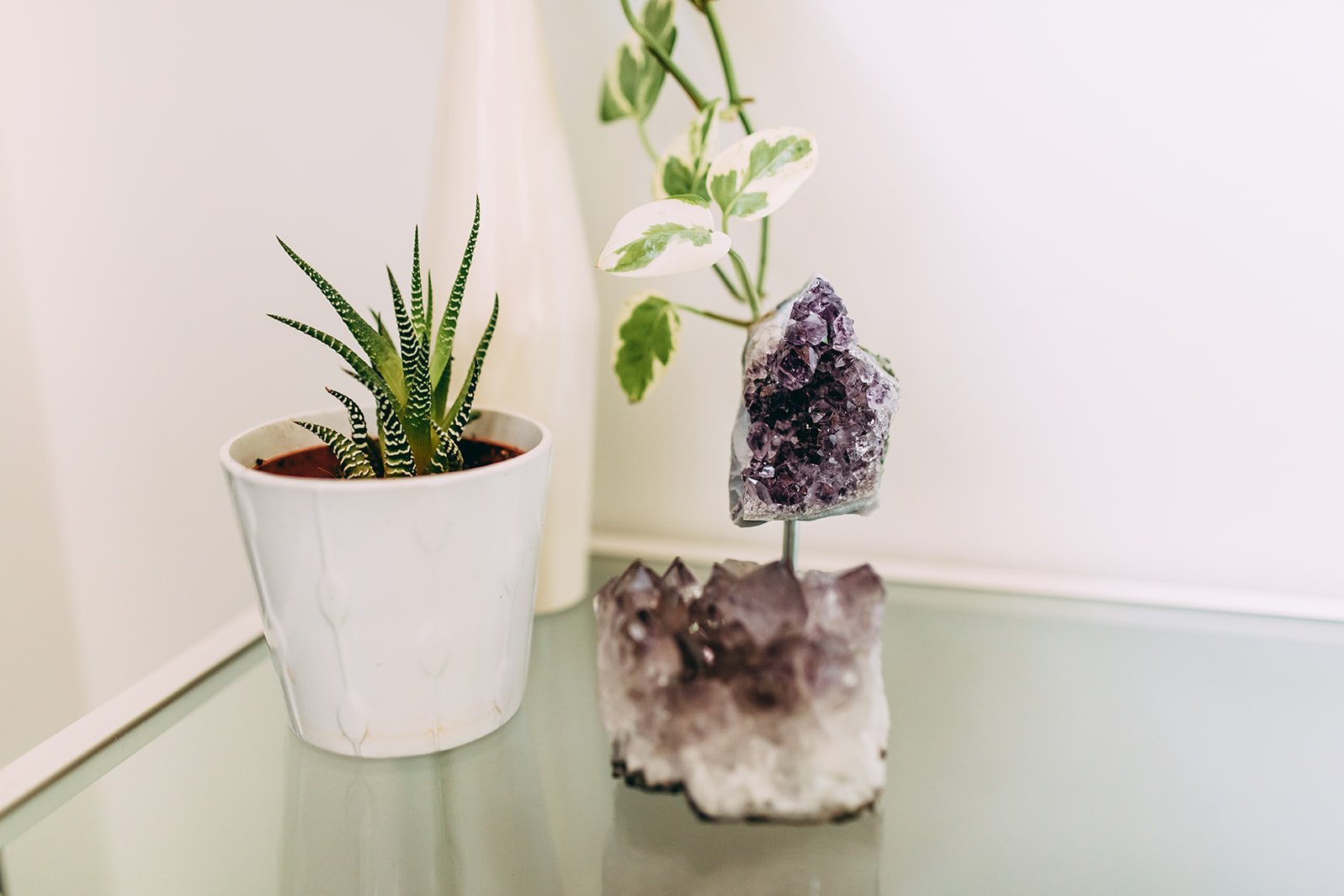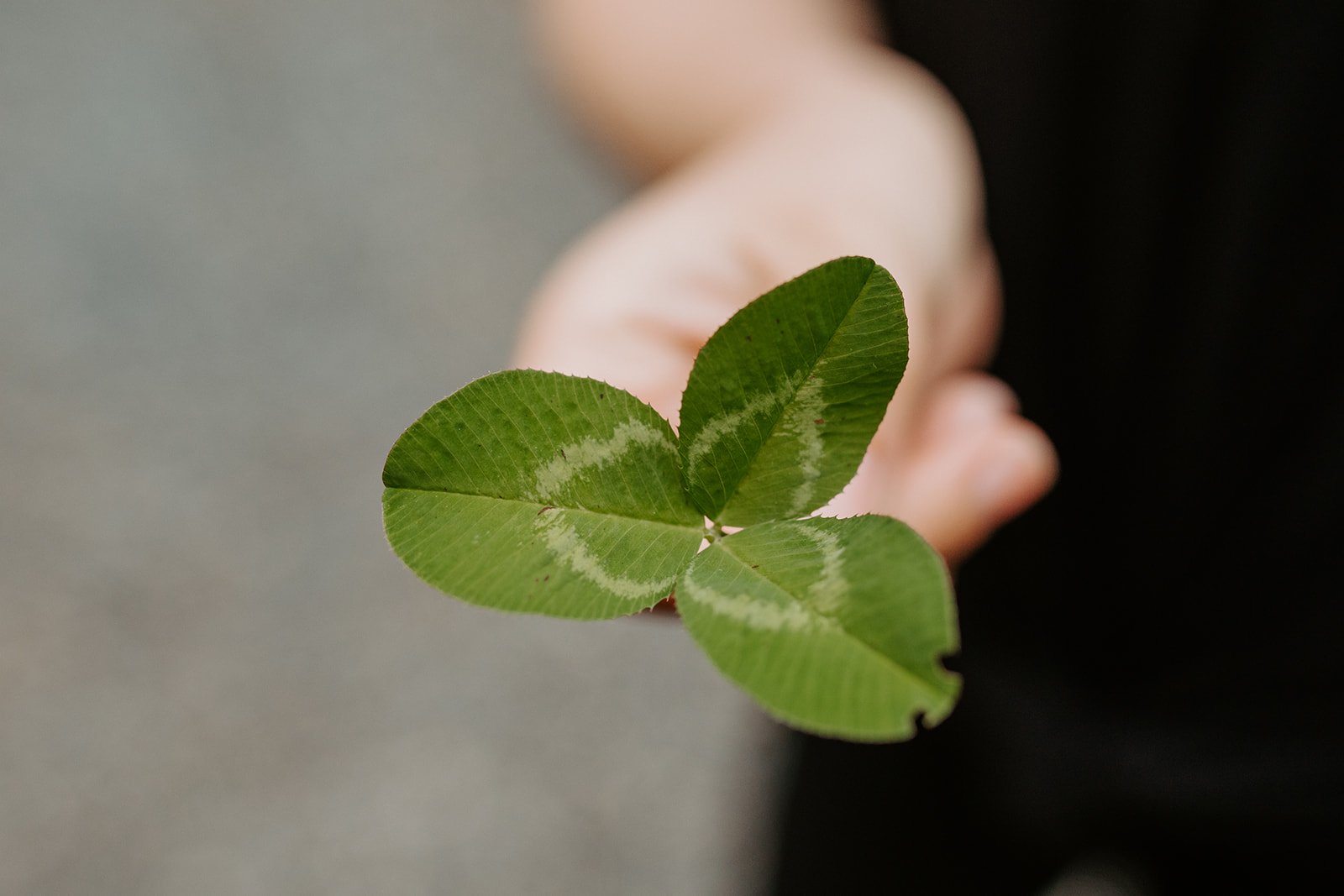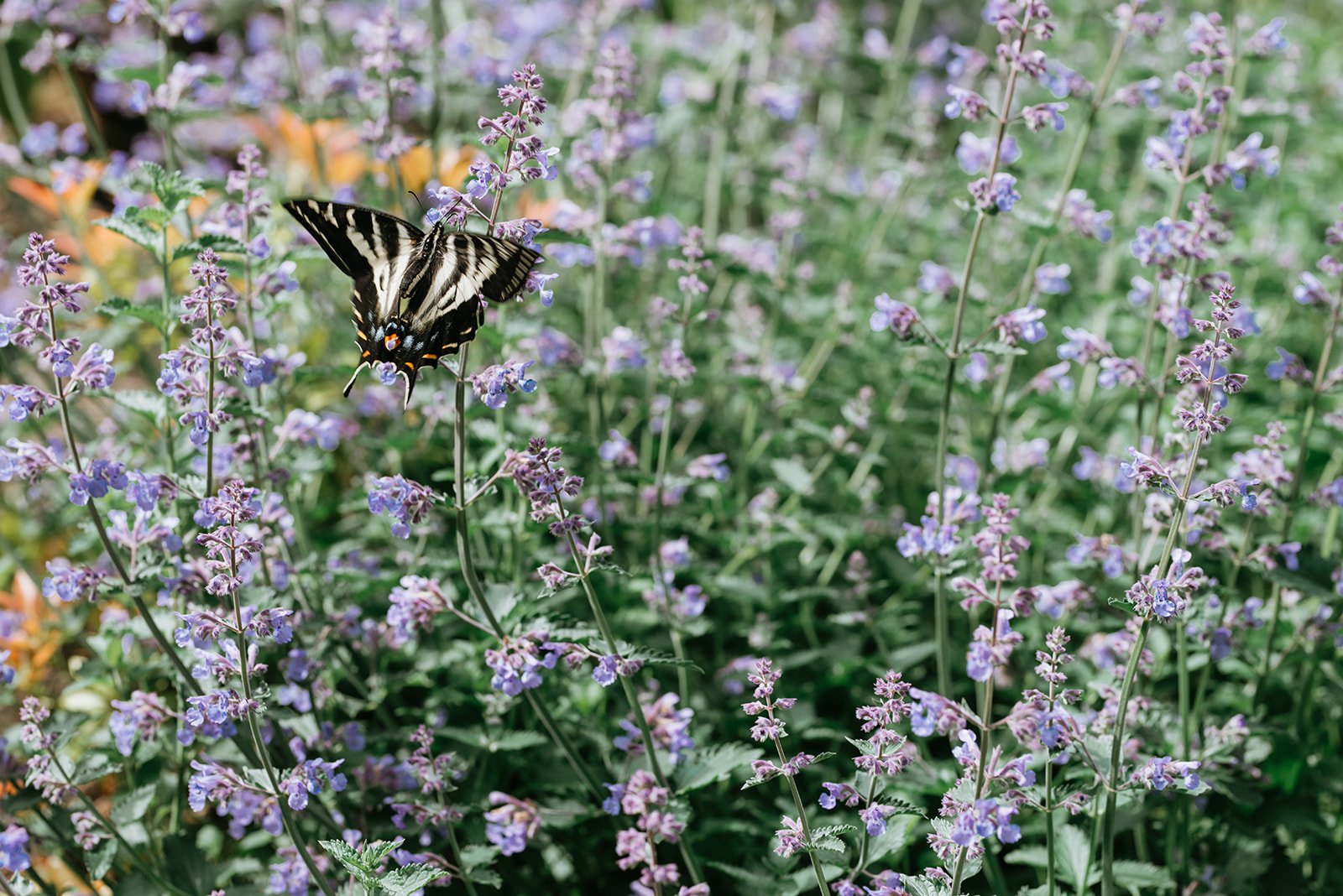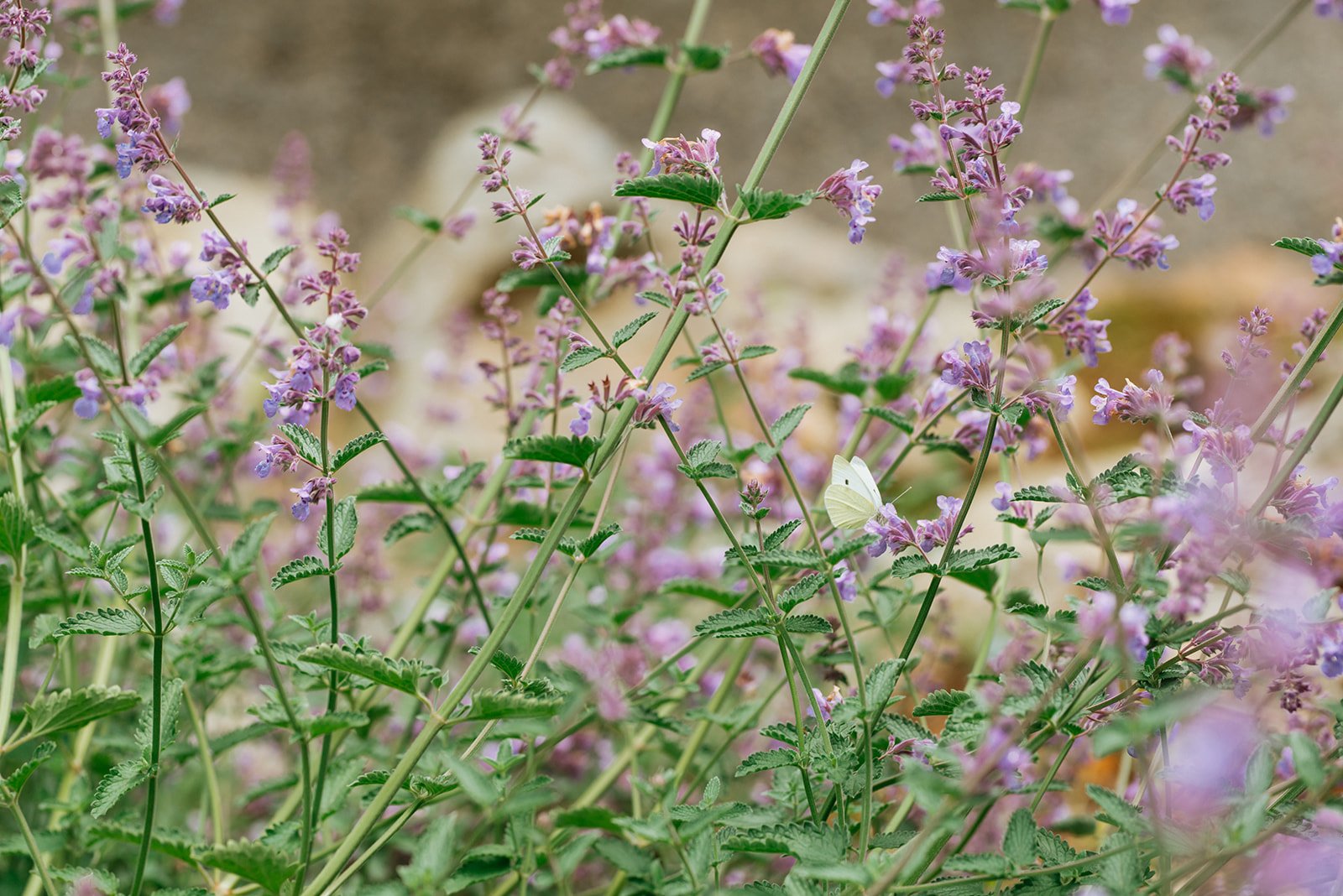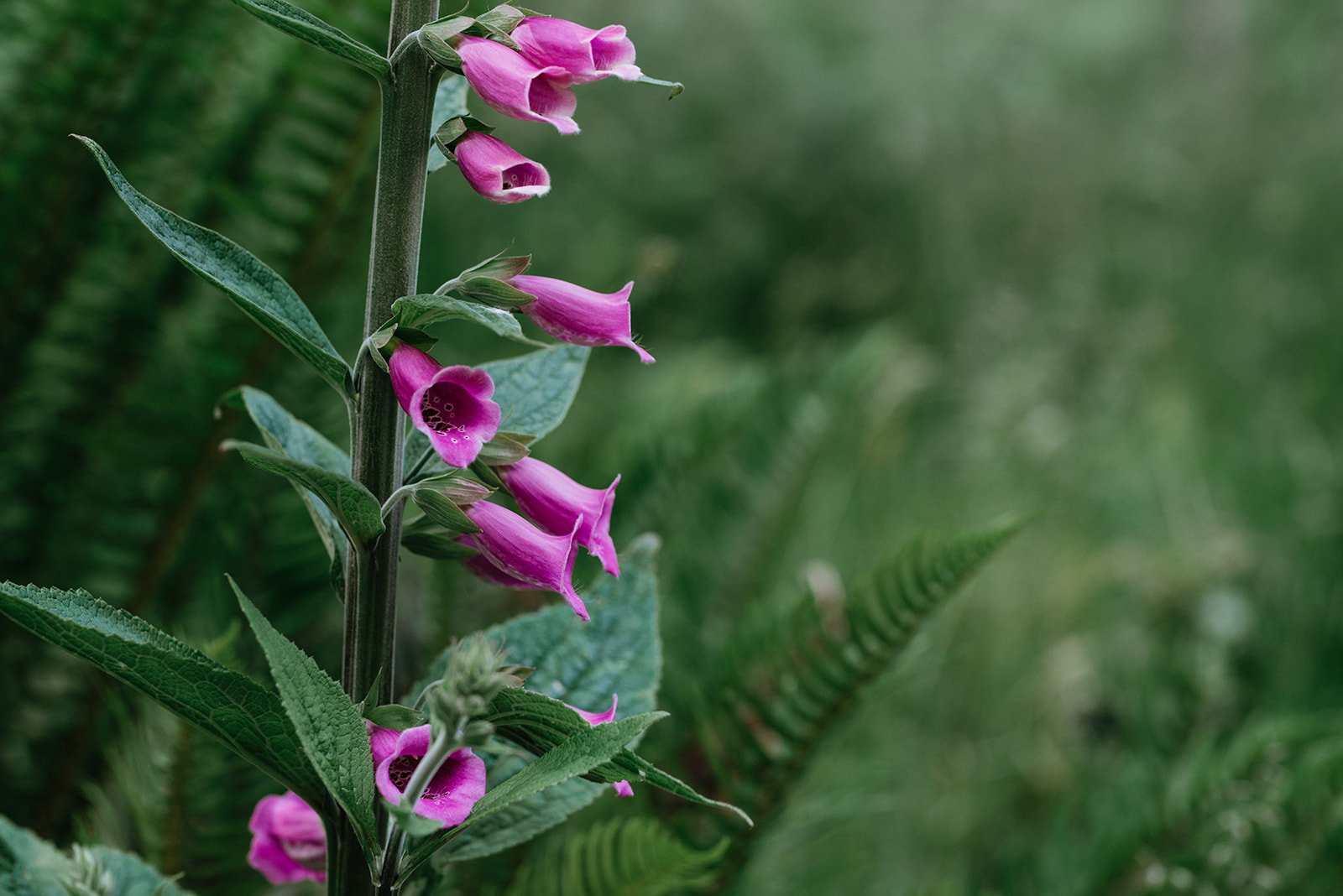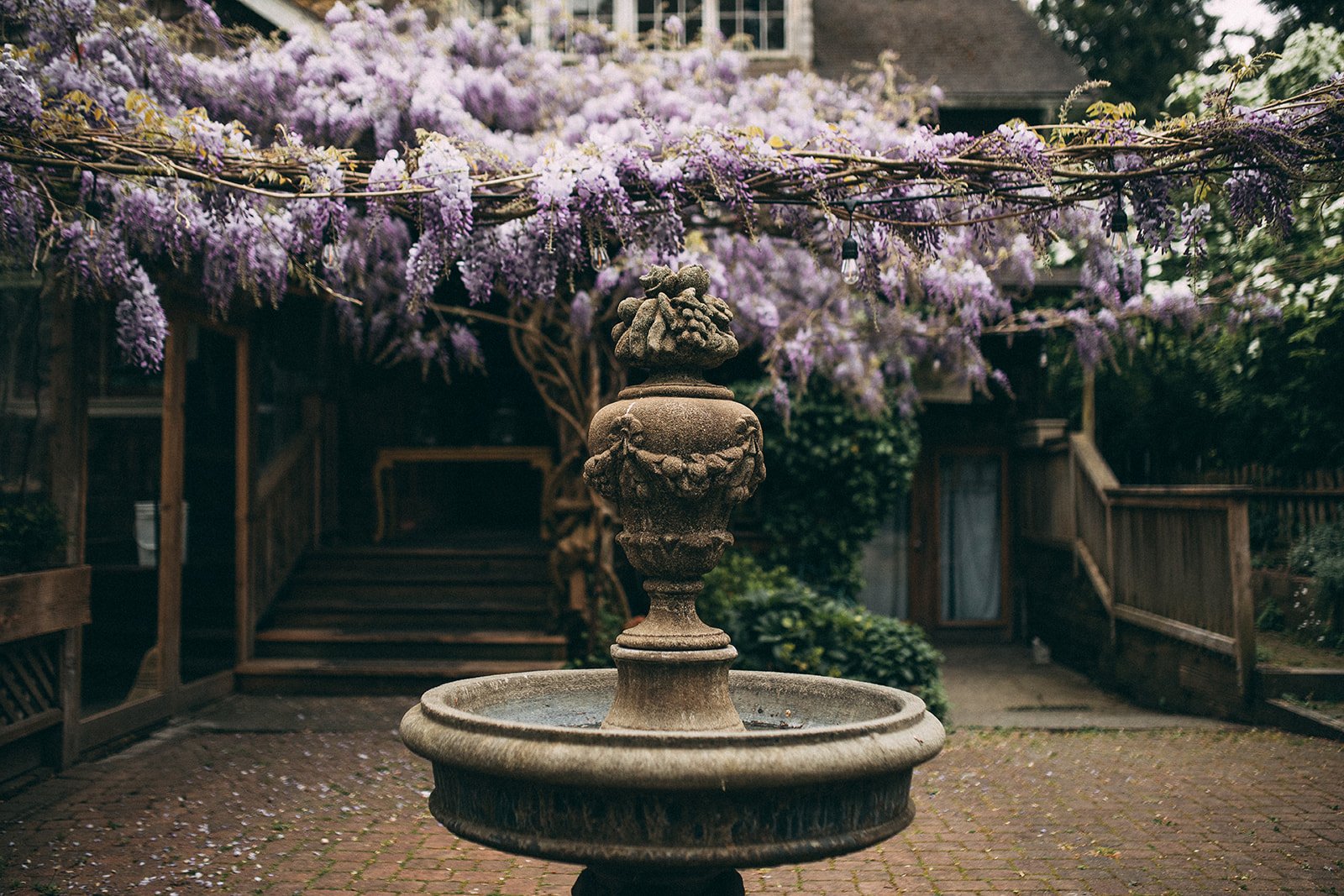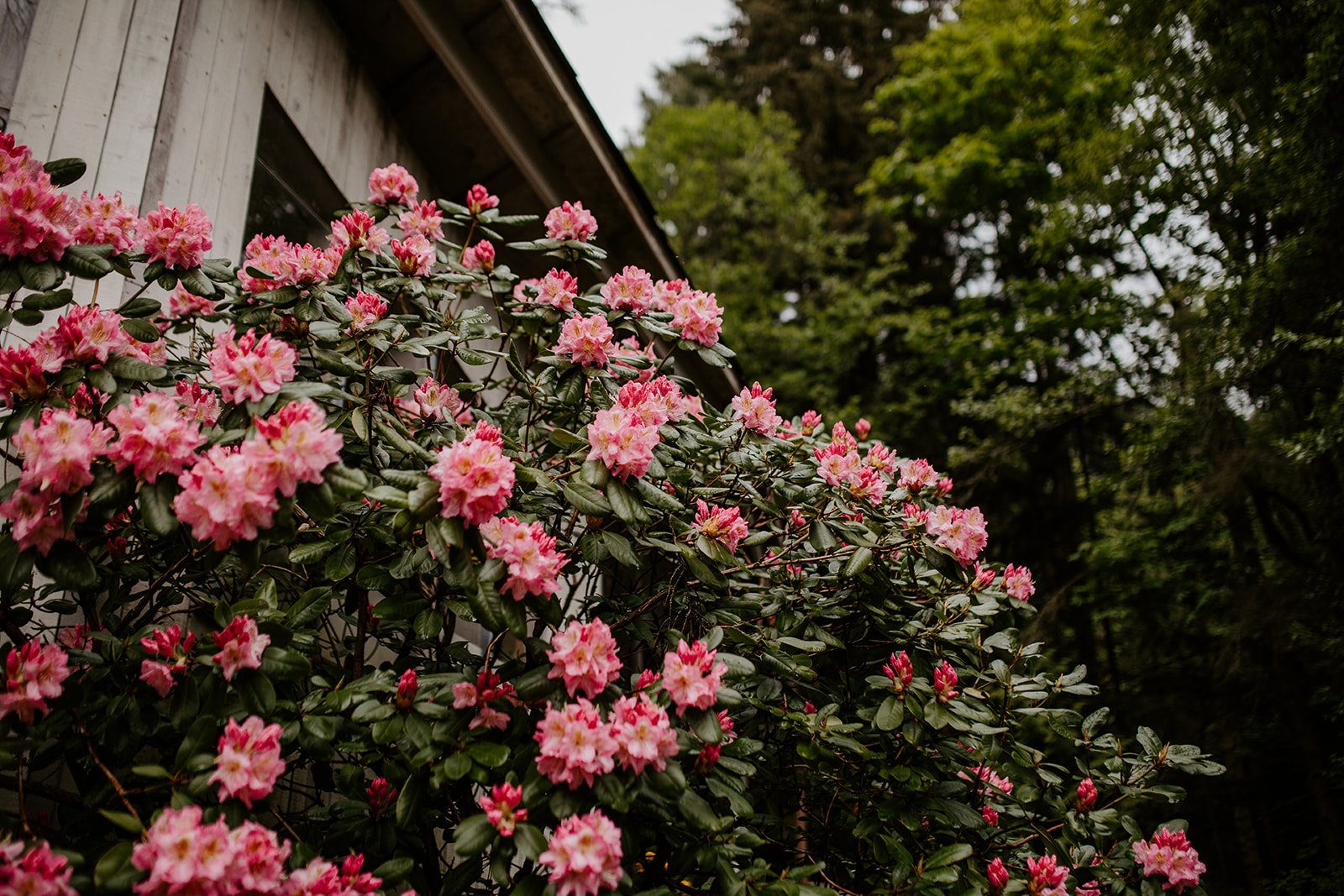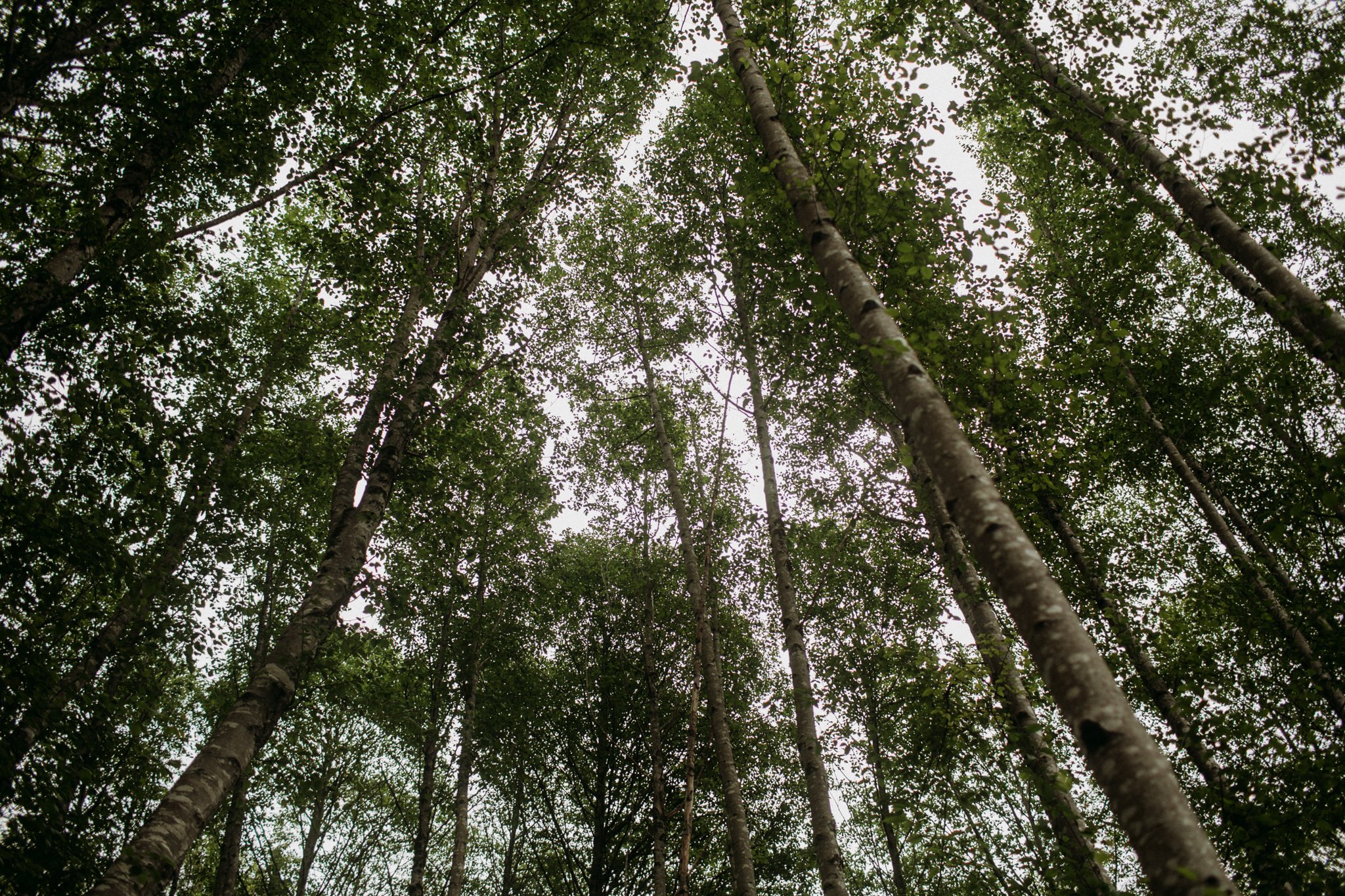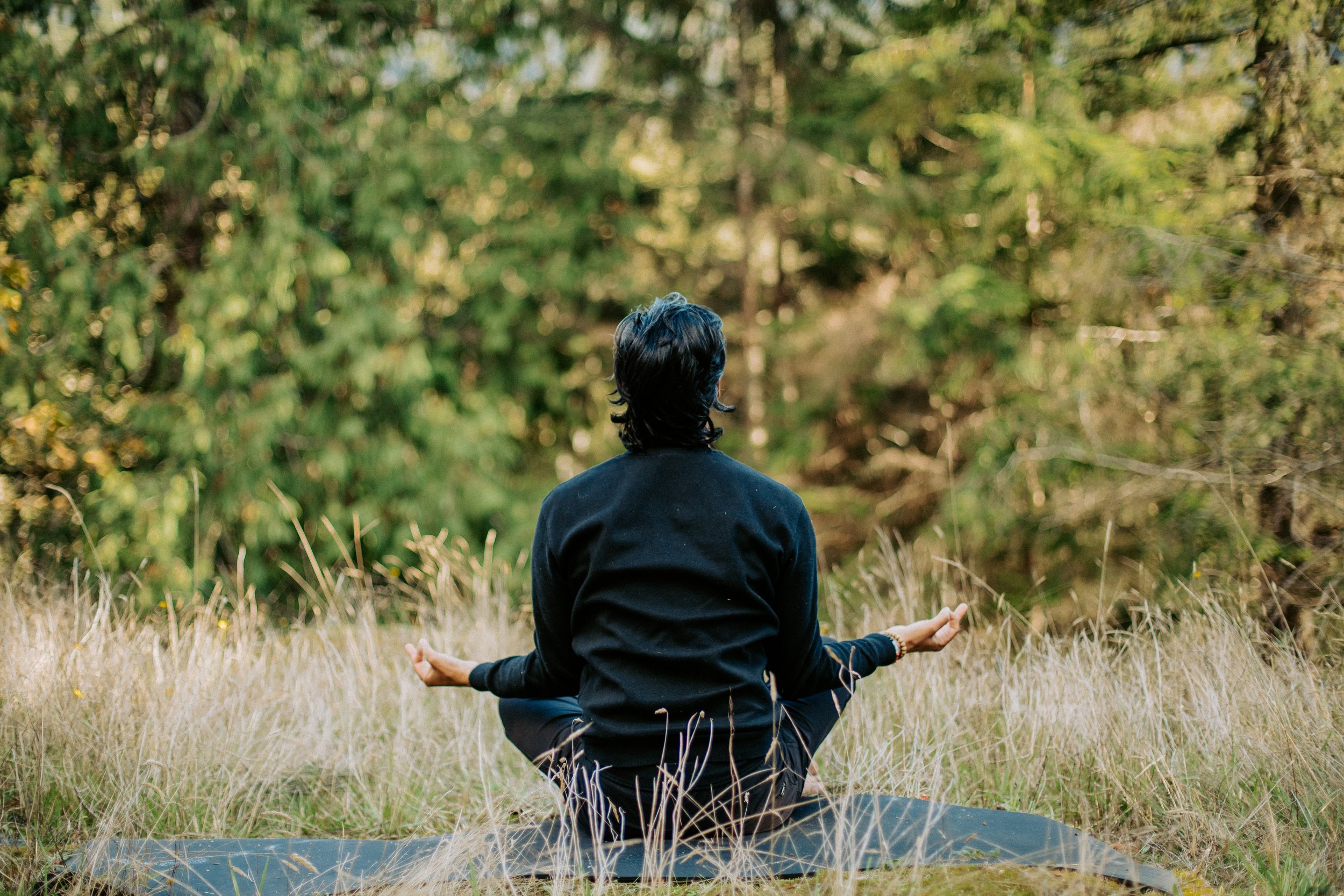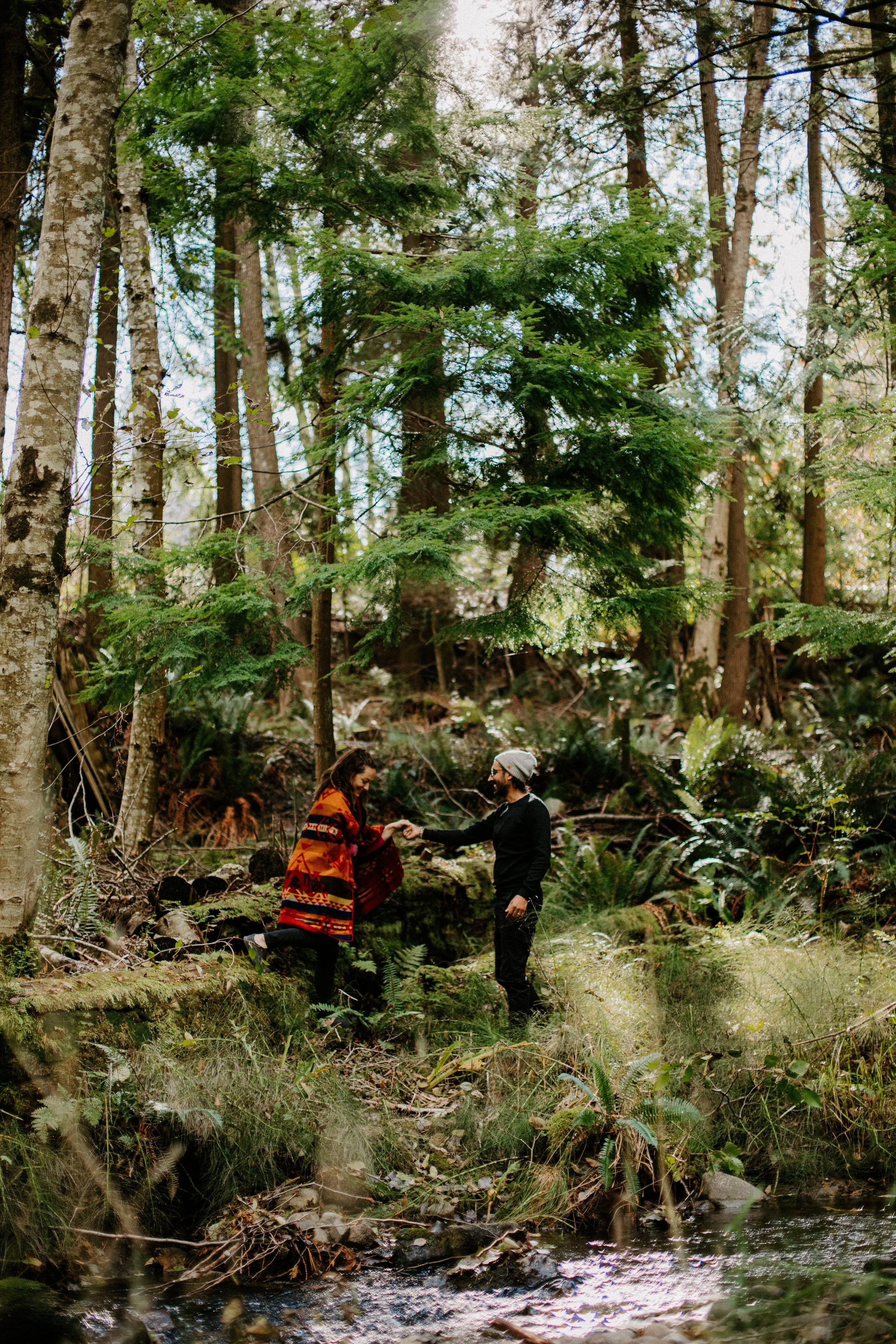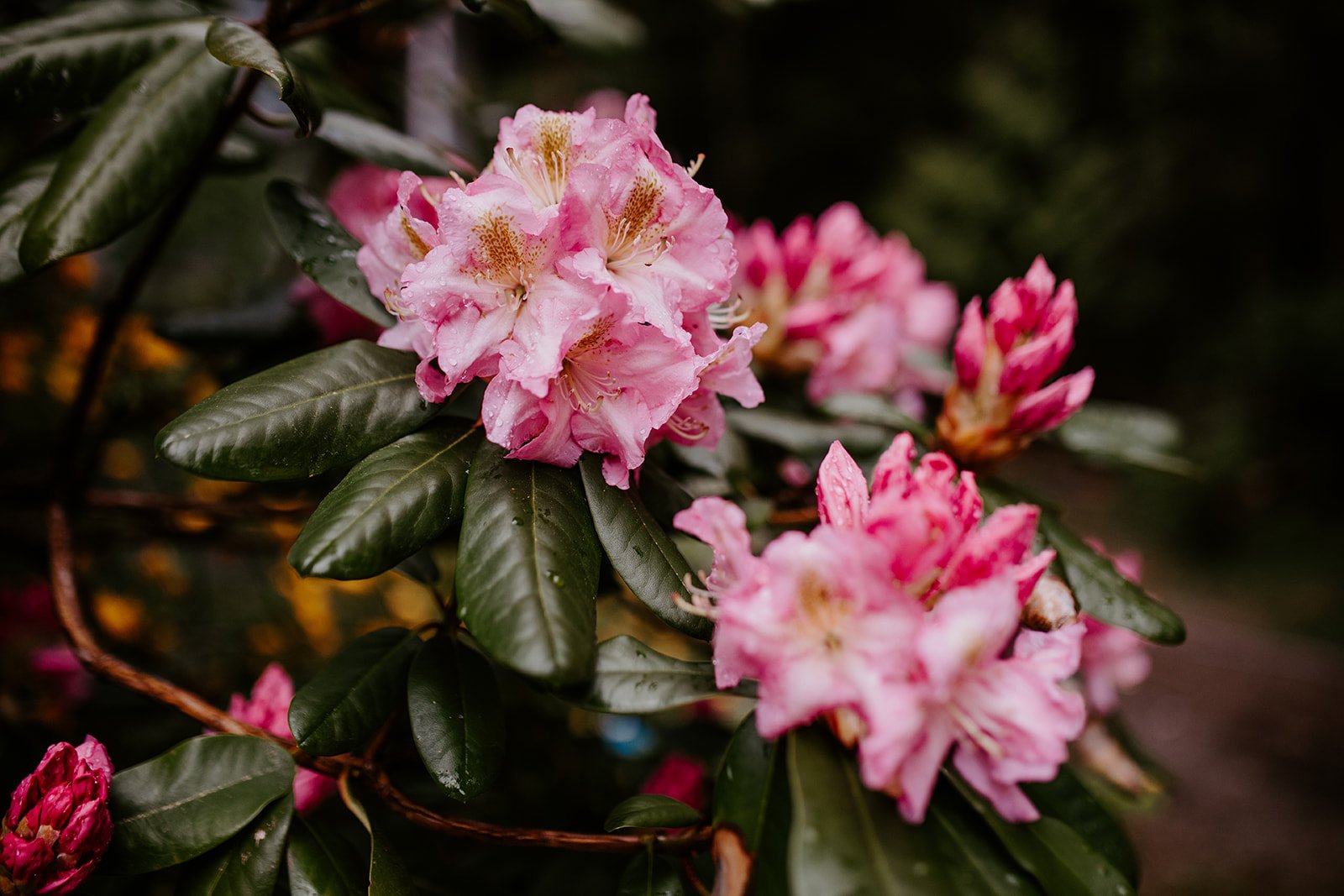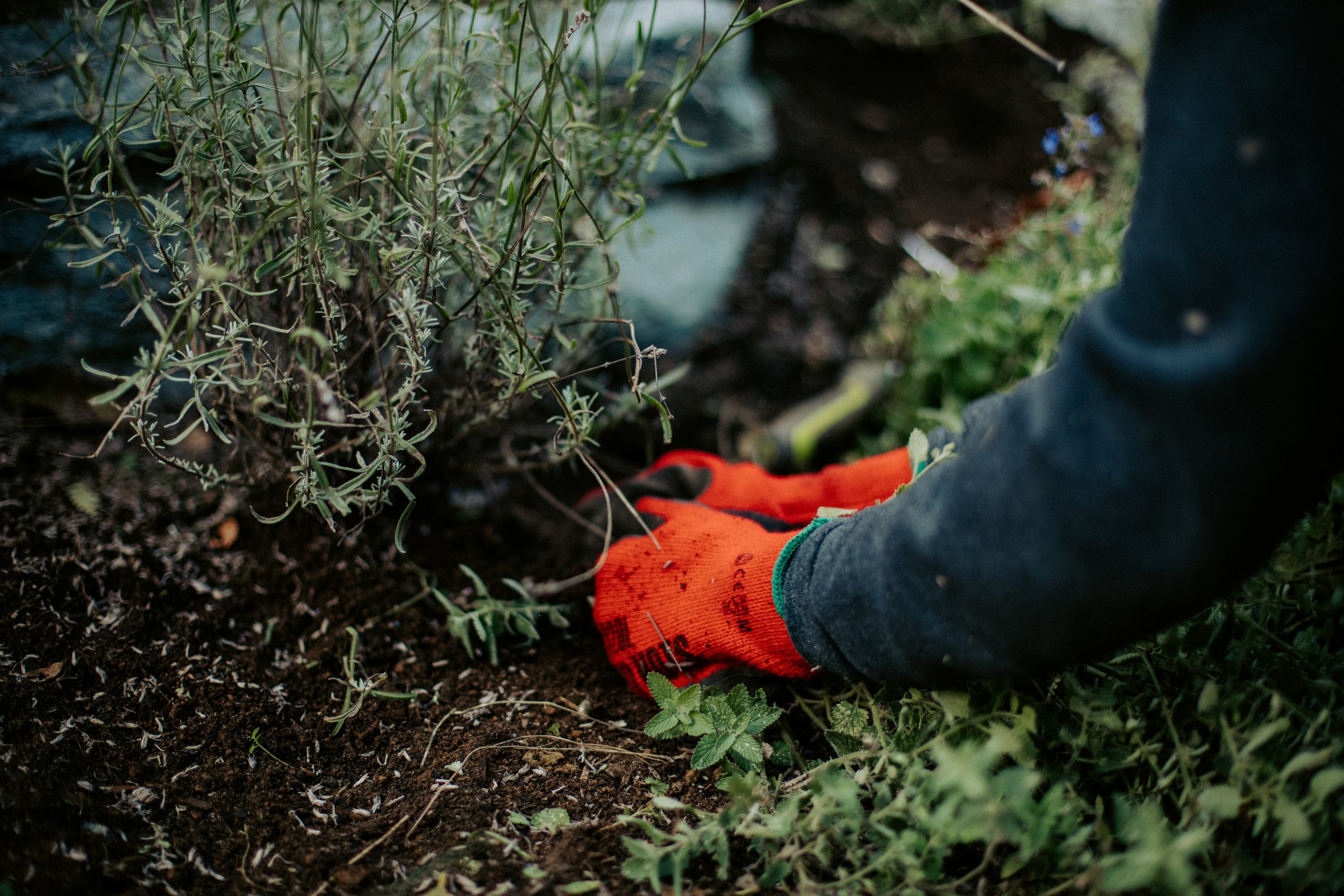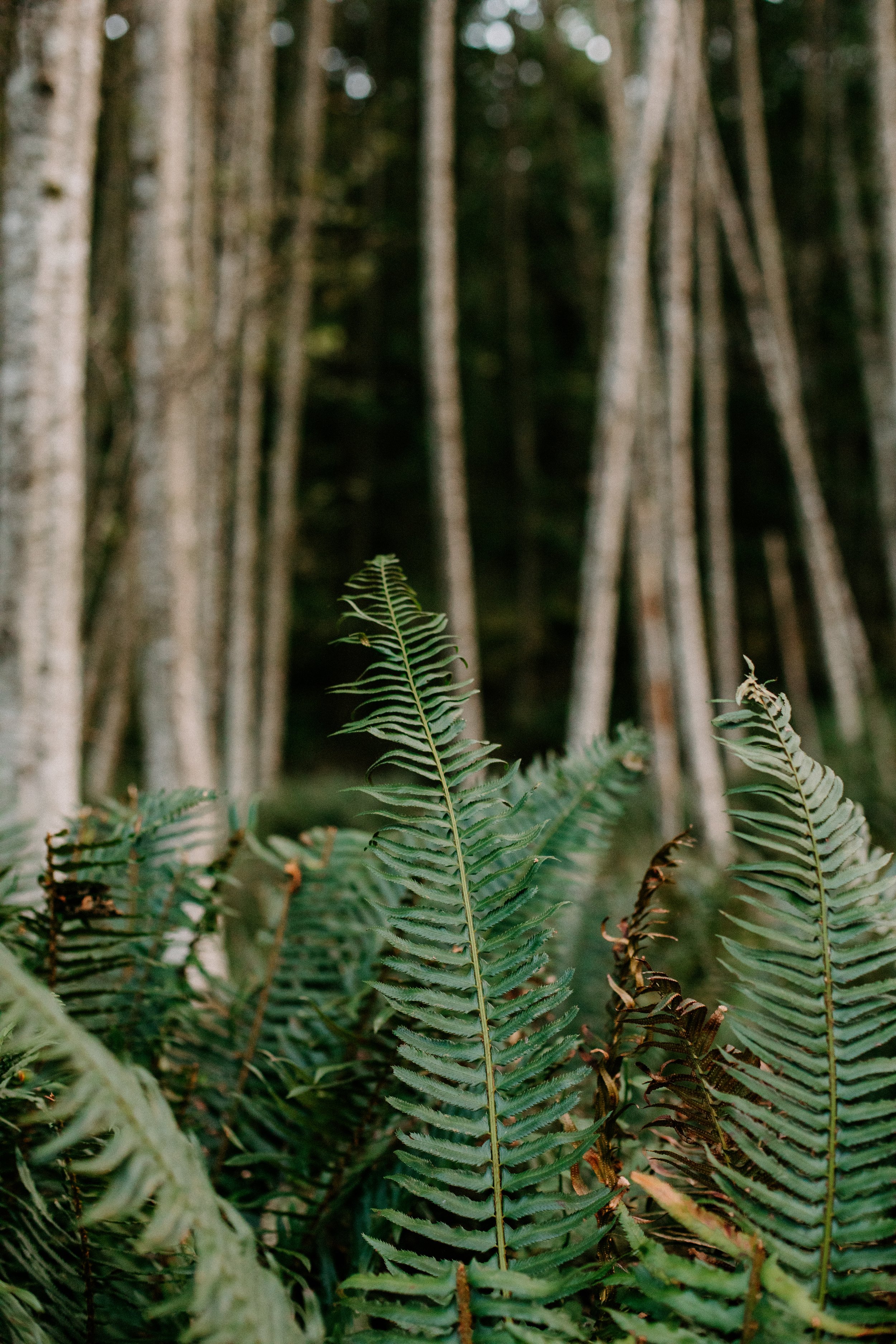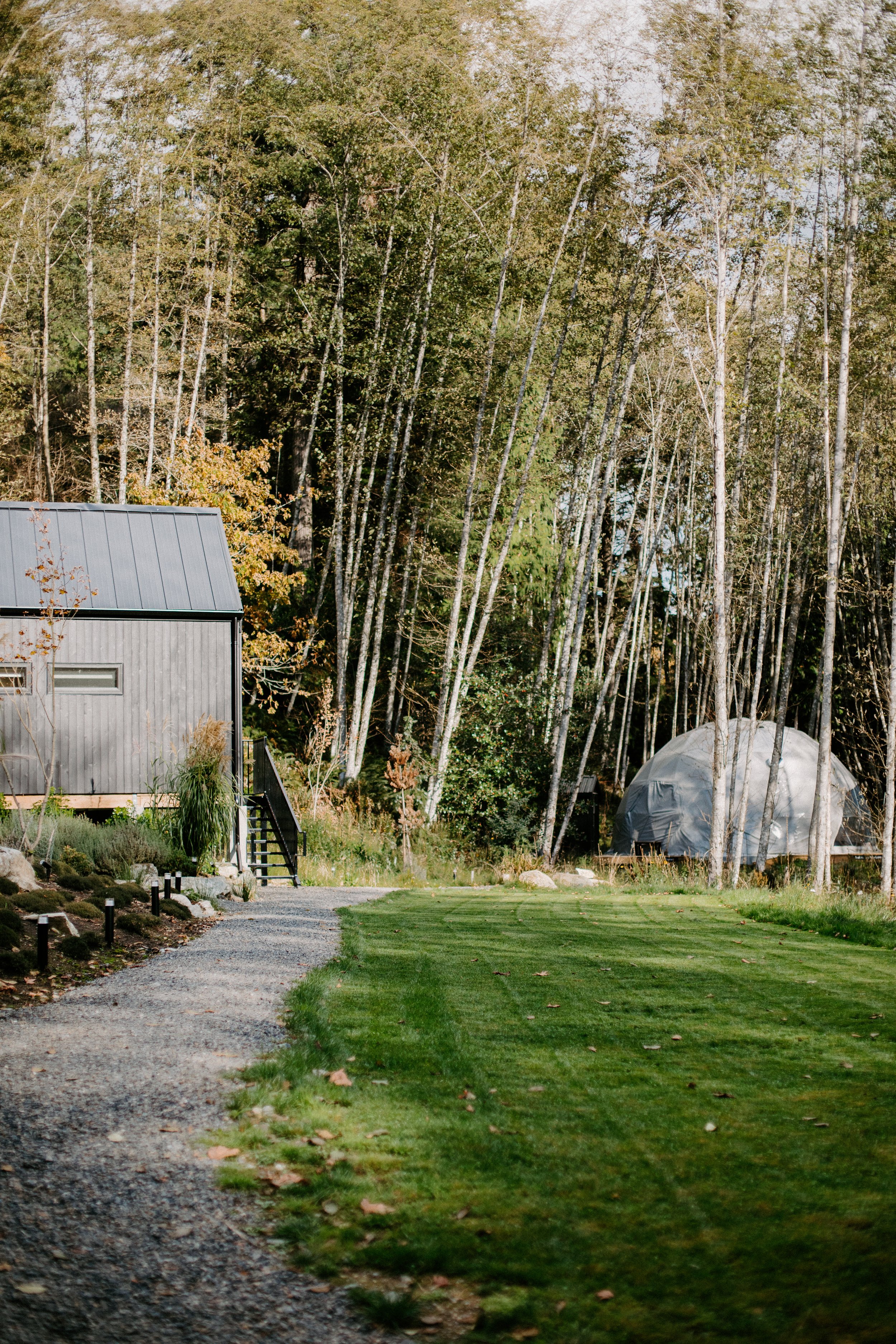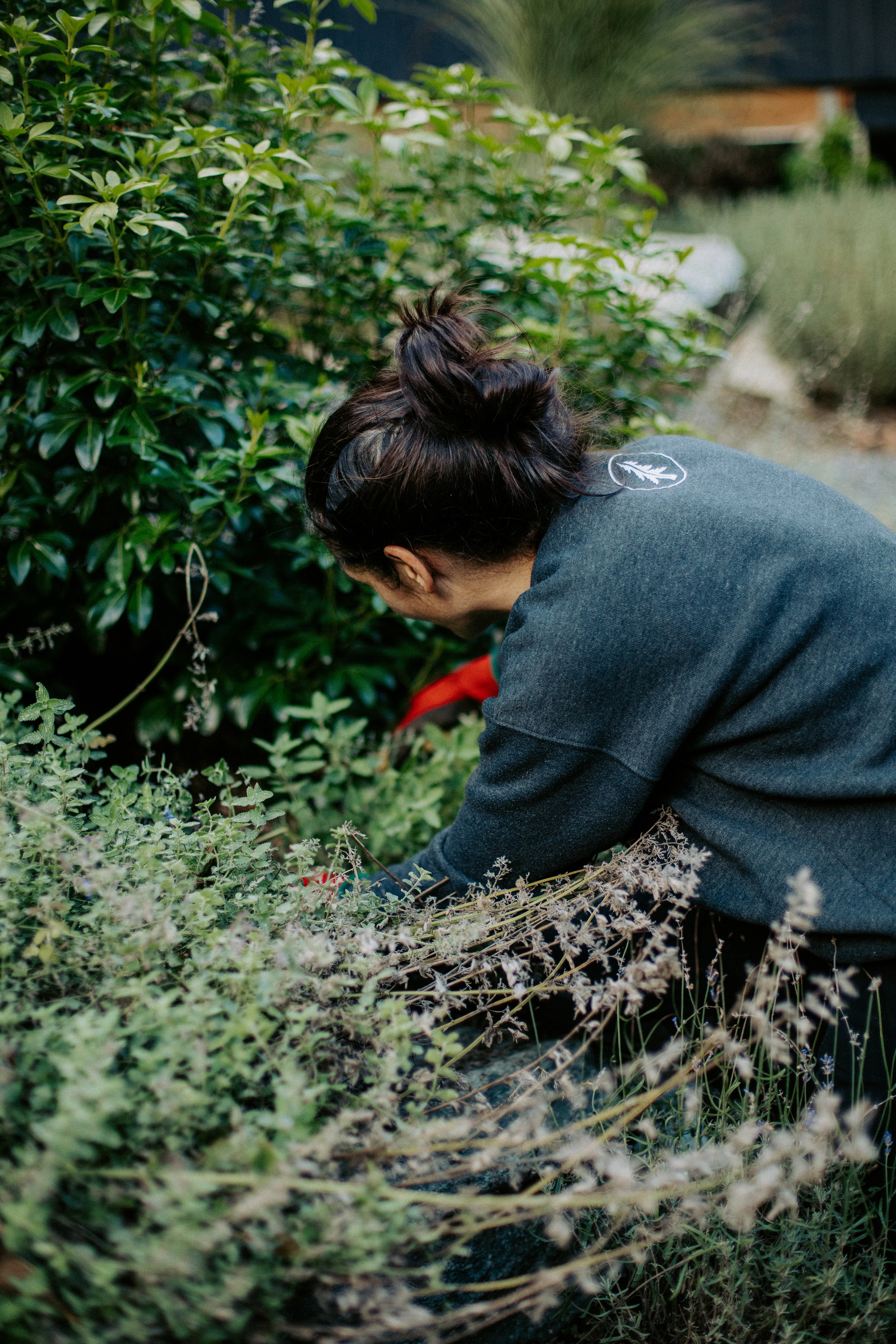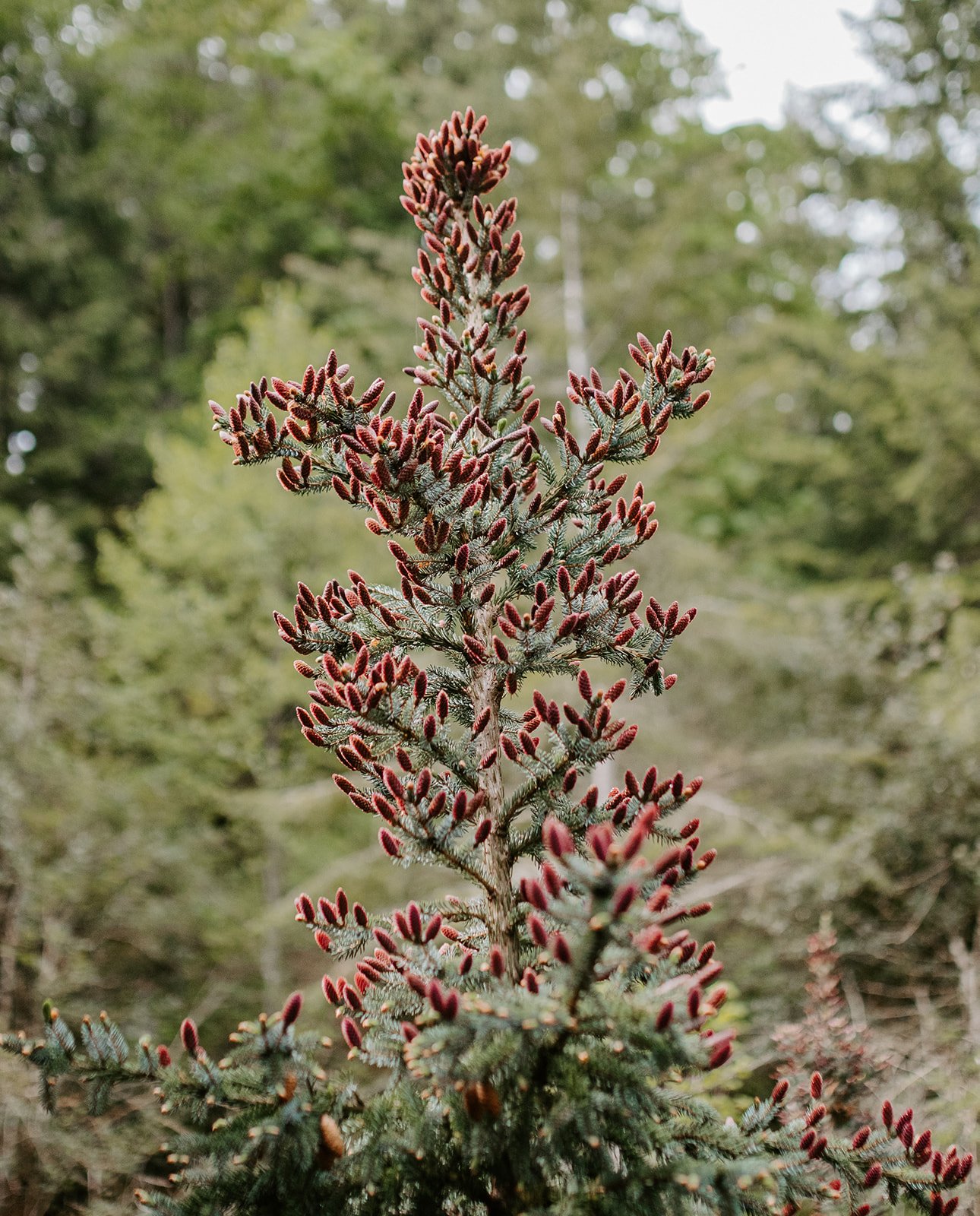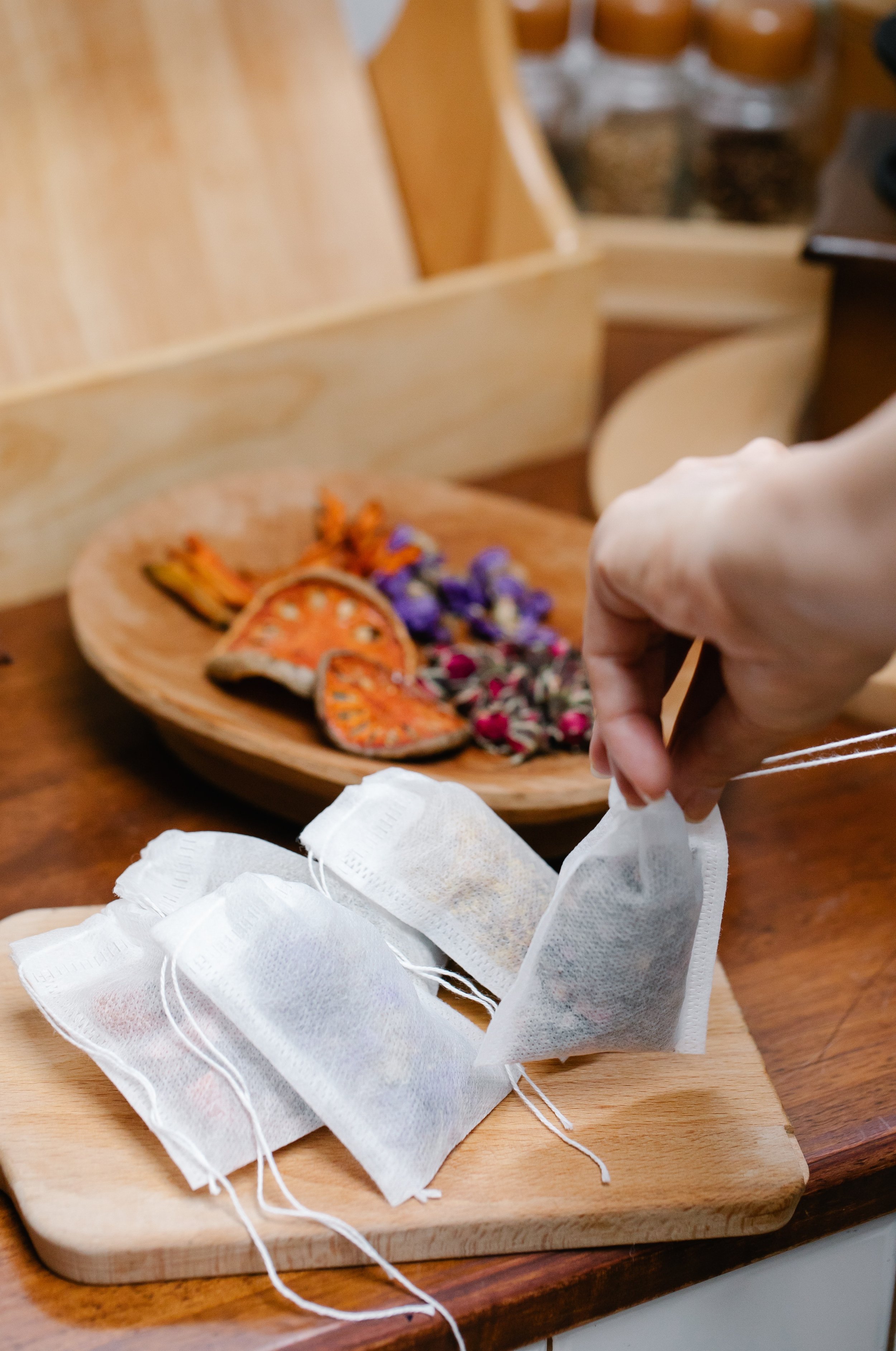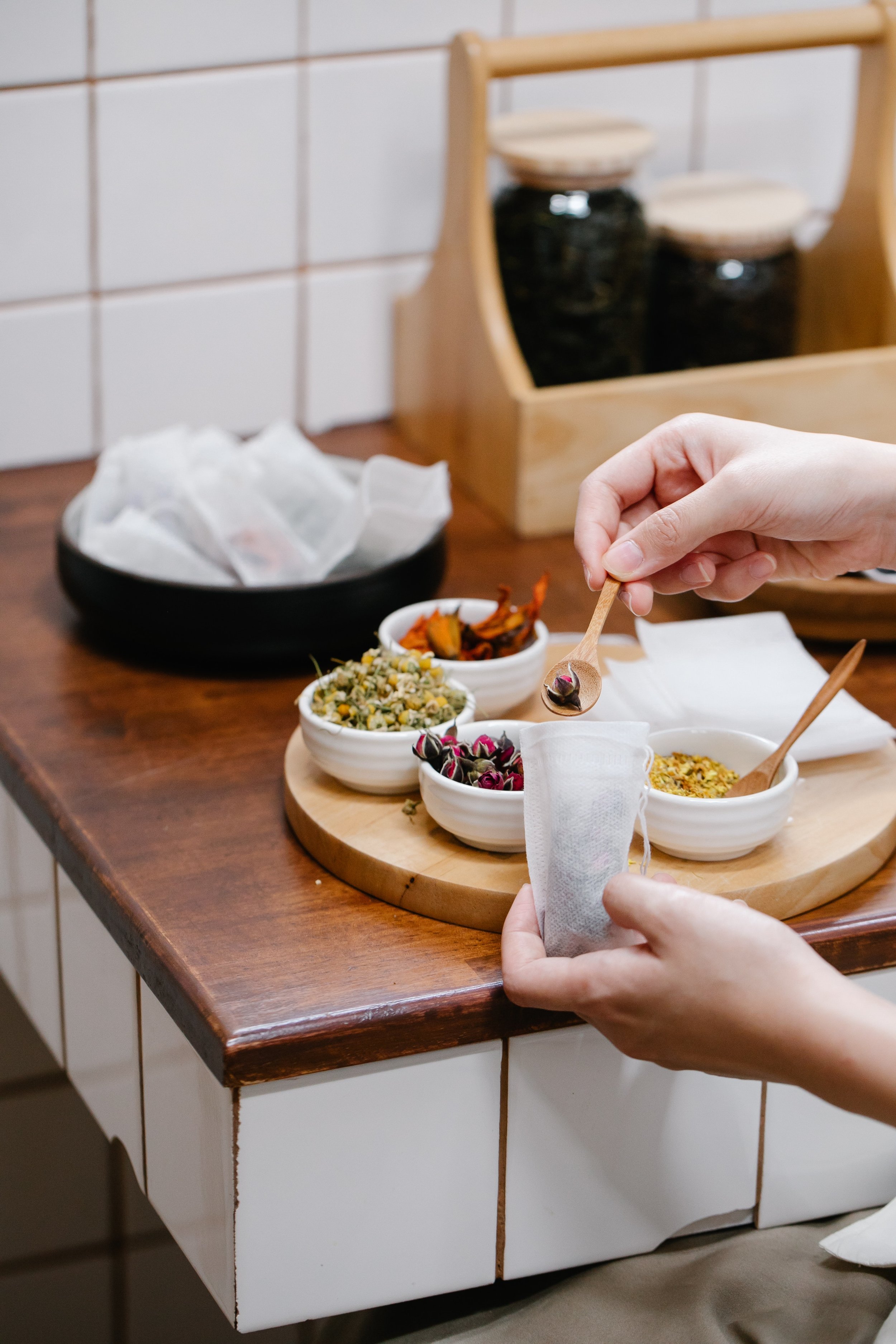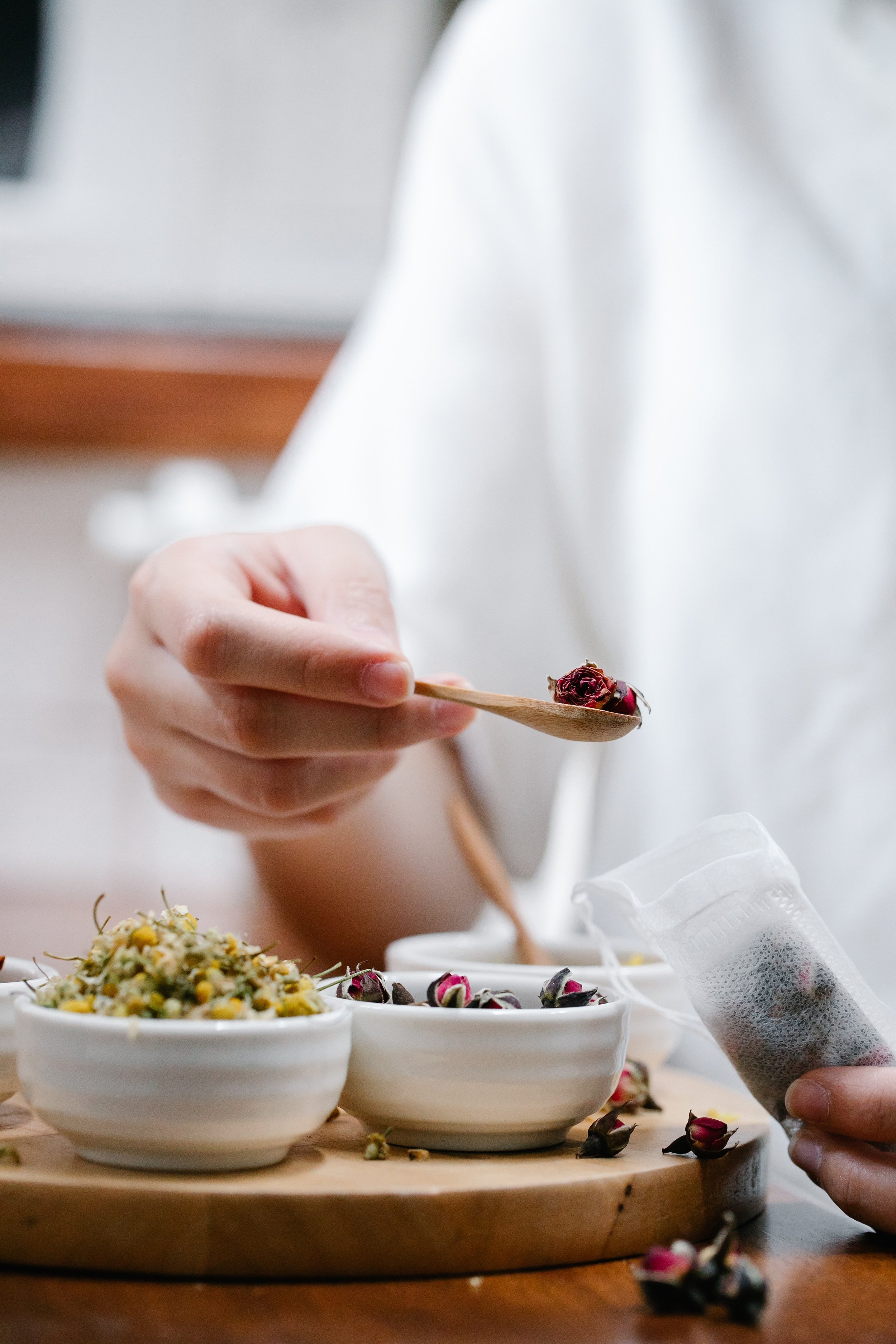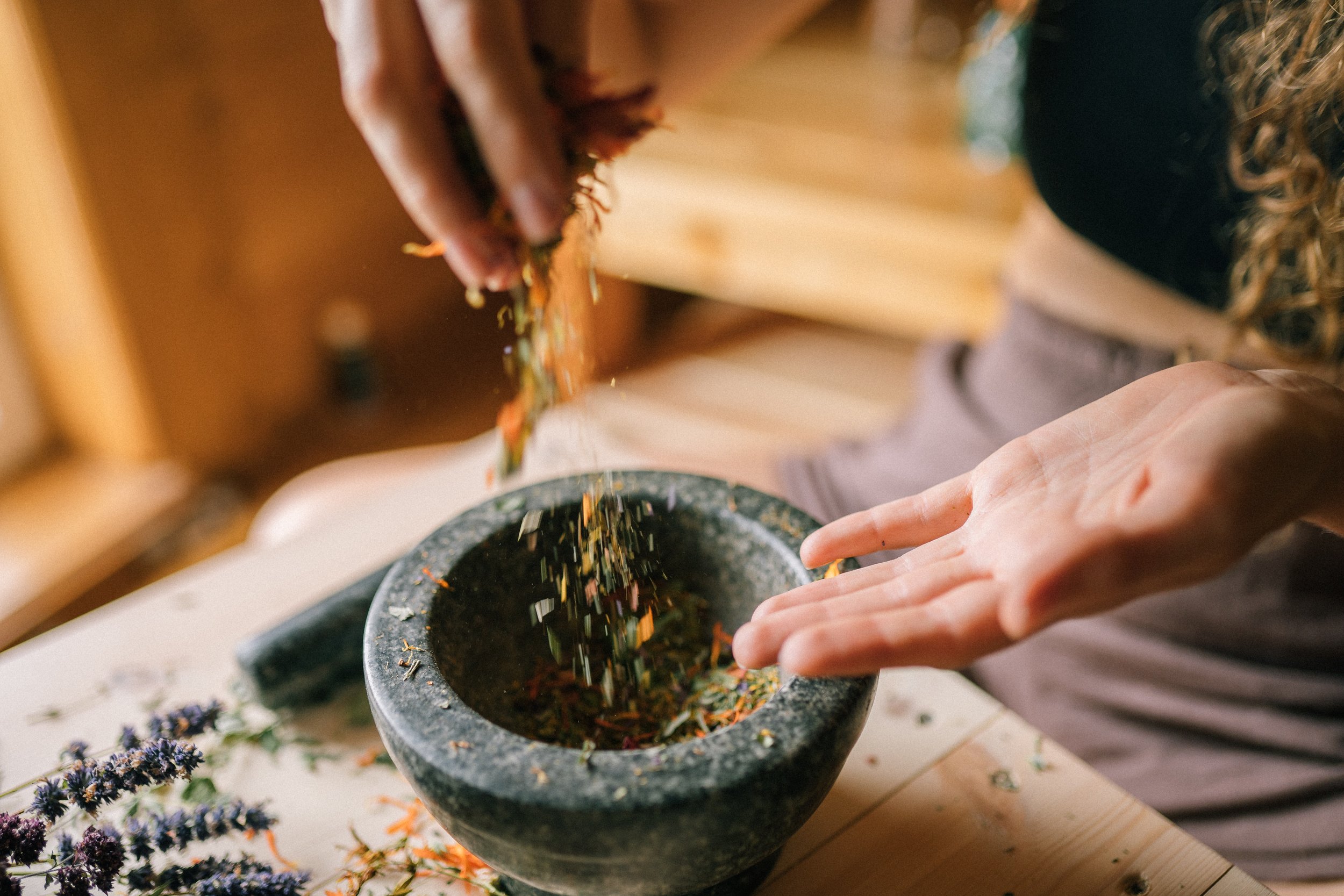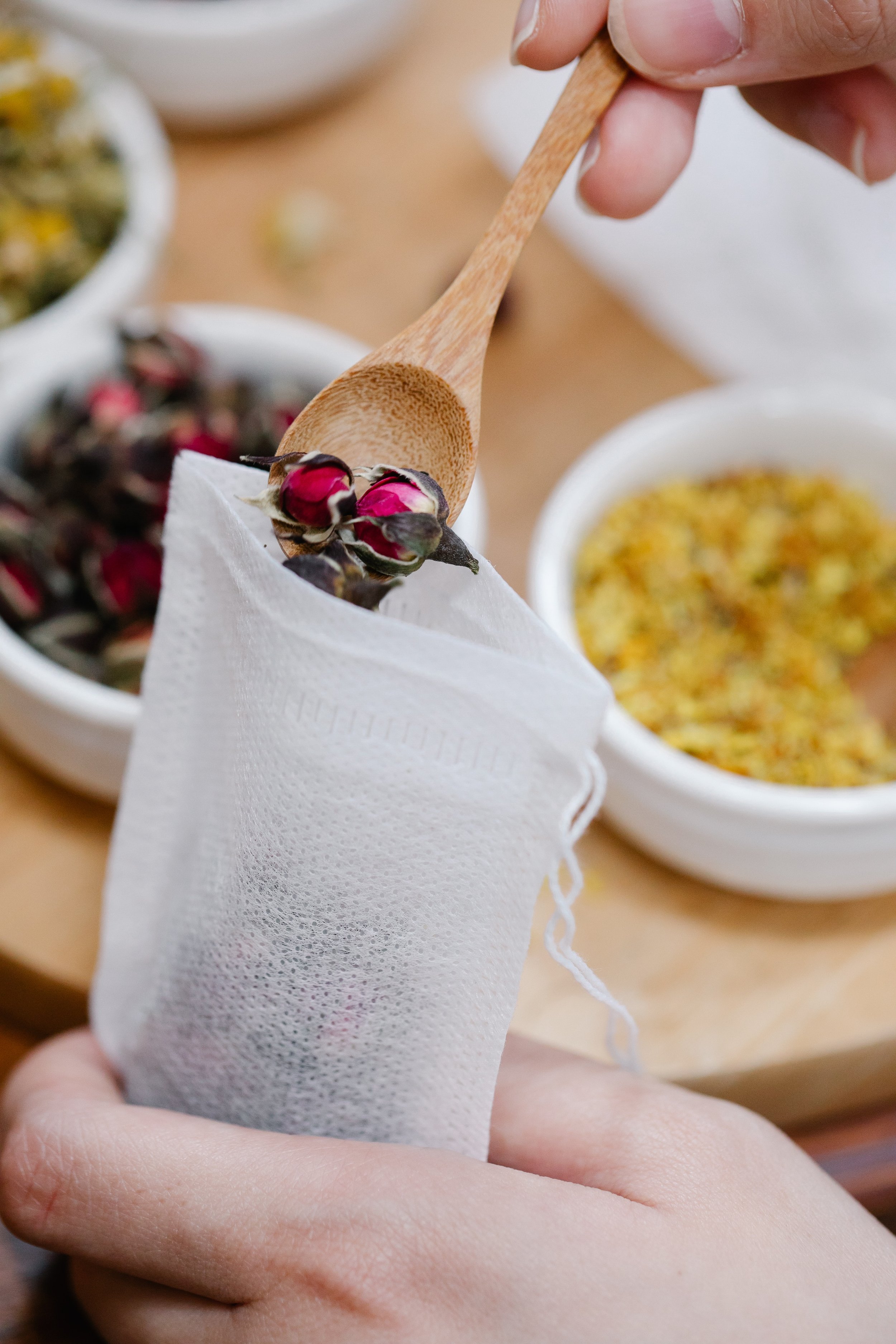The practice of Saucha extends to our relationship with the land. It means centering and learning from the Indigenous groups, such as the Coast Salish peoples, and traditional earth-relating cultures. It calls for mindful consumption, reducing waste, and living in harmony with animals, plants, air, waterways, and other elements in Nature. It means a return to living and consuming seasonally. By being conscious of our ecological footprint, we acknowledge that humans are here for a reason, and to not waste this opportunity to steward this Earth. Saucha reinvites us back to circular living.
Aparigraha-inspired rituals to add to your Summer Practices
As the sun reaches its zenith and the temperatures soar, we find ourselves immersed in the vibrant energy of summer, which aligns with the Ayurvedic season of Pitta. In Ayurveda, Pitta represents the fiery and transformative energy within us. To harmonize with this dynamic season, we can incorporate the principle of Aparigraha into our wellness rituals.
Aparigraha, a Sanskrit term, encourages non-attachment and simplicity, guiding us to let go of the excess and embrace the simple beauties found in the present moment. Combining the energies of Pitta and how to infuse the essence of Aparigraha can help us find balance and bliss in our day-to-day routines and rituals.
Aparigraha is one of the five Yamas, or ethical guidelines, found in the 8 Limbs of Yoga by Patanjali. It is often translated as "non-possessiveness" or "non-grasping", Aparigraha encourages us to cultivate a sense of detachment from material possessions and desires. By embracing the principles of Aparigraha, we can reduce stress, increase mindfulness, and live a more fulfilling life.
Here are some practical ways to incorporate Aparigraha into your daily rituals during Pitta season:
Streamline Your Space: Decluttering your living and working spaces not only creates a sense of calm, but also allows energy to flow freely. Release items you no longer need, keeping only what brings you joy and serves a purpose. A simplified environment enhances clarity and supports a peaceful mindset.
Mindful Consumption: Practice mindful eating by choosing foods that pacify Pitta's fiery energy. Opt for cooling and hydrating foods such as fresh fruits, leafy greens, and cooling herbs like mint and coriander. Avoid excessive spicy, oily, and processed foods that may aggravate Pitta. This mindful approach to nourishment encourages a balanced digestive fire and helps maintain vitality.
Cultivate a Gratitude Practice: Aparigraha invites us to appreciate and be content with what we have. Start or end your day by reflecting on three things you are grateful for. This practice shifts your focus to the abundance in your life and cultivates a positive mindset.
Embrace Simplicity in Self-Care: Choose natural, minimalistic skincare and beauty products that align with the principles of Aparigraha. Look for ingredients that are gentle, nourishing, and free from harsh chemicals. Incorporate practices like oil massage (abhyanga) using cooling oils such as coconut or rose, and take time for soothing activities; such as gentle yoga, meditation, or leisurely walks in nature.
Let Go of Excessive Busyness: Pitta season can drive us to be hyper-focused and goal-oriented. While productivity is essential, it's equally important to balance it with rest and relaxation. Allow yourself moments of stillness, unplugged from technology, to recharge and rejuvenate. Consider minimizing your social media and technology use, and spending more time in nature or engaging in creative pursuits. Prioritize activities that bring you joy and help you unwind, such as reading a book, listening to music, or spending quality time with loved ones.
By embracing the themes related to Aparigraha, we create space for growth, contentment, and a deeper connection with ourselves and the world around us.
Let us know in the comments how you incorporate the energies of Pitta season and the principles of Aparigraha, in your daily rituals.
Book your Nectar Experience Summer package to elevate and share your practices with us here on Bowen Island in beautiful British Columbia. Book your 2-Night Nectar Yoga Experience package here
Sources Cited:
Acknowledgement and thanks to the contributing writers for the resources of this publication from Sejal Shah via The Art of Living and Scott Blossom via YogaJournal.
As always, sending gratitude to our community near and far, both for taking the time to explore our blog and for walking the path to your best self - we hope this resonated and aided you in finding peace and balance within.
If you feel called to share your feelings and practices surrounding the practice of Aparigraha, please do so in the comments below or send us a message via email.
All Photos - Copyright Nectar Yoga
Brahmacharya Practices to Adopt this Summer
As we move into the Ayurvedic season of Pitta, it's important to consider how we can stay balanced during the heat of summer and protect our energy. One way to do this is by practicing Brahmacharya, one of the five Yamas of Yoga. Brahmacharya is often translated as celibacy or sexual restraint, but it also encompasses the proper use of energy in all areas of our lives.
In Ayurveda, Brahmacharya is seen as a way to conserve our vital life force, or "prana," which is essential for physical, mental, and spiritual health. By preserving our energy, we can live a more balanced and fulfilling life, free from anxiety, stress, and burnout.
The word "Brahmacharya" is derived from two Sanskrit words: "Brahma," meaning the absolute or divine, and "charya," meaning behaviour or conduct. Therefore, Brahmacharya is often interpreted as the "right use of energy."
Practicing Brahmacharya involves cultivating self-discipline, self-control, and mindfulness. This includes our relationships, work, hobbies, and daily habits. It involves being mindful of our thoughts, words, and actions and making choices that align with our highest purpose.
During the Ayurveda season of Pitta, practicing Brahmacharya can be particularly beneficial. The season's heat and intensity can lead to agitation, irritability, and burnout if we don't take steps to protect our energy. By practicing Brahmacharya and incorporating daily rituals that help us stay balanced, we can conserve our energy and direct it toward our highest purpose.
One way to practice Brahmacharya during the Pitta season is to incorporate daily rituals that help us stay balanced. Here are a few ideas:
Wake up early: Ayurveda recommends waking up before sunrise to align with the natural rhythms of the universe. This helps us feel more energized and focused throughout the day.
Practice Yoga: Yoga is a great way to move our bodies and calm our minds. During the Pitta season, it's best to practice gentle, cooling poses like forward folds, seated twists, and gentle backbends.
Meditate: Meditation is a powerful tool for conserving energy and calming our minds. You can start with just a few minutes each day and gradually increase the time as you feel more comfortable.
Eat cooling foods: During the Pitta season, it's essential to eat cooling and hydrating foods. This includes fresh fruits and vegetables, coconut water, and herbal teas.
Stay hydrated: Drinking plenty of water and electrolyte-rich drinks like coconut water helps us stay hydrated and cool during the heat of summer.
By incorporating these daily rituals into our lives, we can practice Brahmacharya and protect our energy during the Pitta season. When we conserve our energy and direct it towards our highest purpose, we can live a more balanced and fulfilling life.
Looking for some in-person guidance on where to start incorporating these practices? Book your 2-Night Nectar Yoga Experience package here and spend some time slowing down with us in nature.
Sources Cited:
Acknowledgment and thanks to the contributing writers for the resources of this publication; Segal Shah via The Art of Living, Rolf Sovik via Yoga International and Esther Ekhart of Ekhart Yoga
As always, sending gratitude to our community near and far, both for taking the time to explore our blog and for walking the path to your best self - we hope this resonated and aided you in finding peace and balance within.
If you feel called to share your feelings and practices surrounding the practice of Brahmacharya, please do so in the comments below or send us a message via email.
All Photos - Copyright Nectar Yoga
Plant Medicine | Trees of the Pacific Northwest
Here at Nectar Yoga, in the beautiful Pacific Northwest of Canada, we are blessed with an abundance of different flora and fauna, each lending its’ unique properties to our environments.
As part of the living yoga practice and our commitment to being stewards of the land, part of our practice of Svadhyaya, the Yama translating to self-study, is learning the wisdom of the trees.
On our 20 acres of forested land at Nectar Yoga, we have over ten different species of trees alone. At the same time, according to provincial government documentation* from British Columbia, there are approximately 40 tree species found across the province.
The roots of trees have two jobs, to anchor the tree to the earth, and absorb nutrients and water from the soil. As humans, our “roots” and foundations are our anchor points as we grow.
We grow stronger when nurtured with healthy food, relationships, lessons, feedback, and reflections. Though our roots are weak from a lack of coping tools, unhealthy relationships, poor nutrition, etc., we struggle to grow.
Trees, in particular, quietly offer many lessons from which humans can learn much. The David Suzuki Foundation* created a thoughtful list to inspire perspective.
Always grow toward the light. Live righteously and let your reach exceed your grasp.
Knowing the smallest scratch can have lasting effects. Be mindful of what you teach children and others who will follow you.
Provide refuge. Trees give food, shade and shelter. Be a source of comfort. Provide for others in need.
Share your fruits. Proactively reach out to bring sweetness and sustenance to others.
Waste nothing. Nature never wastes. Tree leaves fall and enrich the soil for new growth. Give back to the world to sustain others.
Be supple in the wind. You’re the product of billions of years of evolution. You may be stronger than you think. Bend like the willow to survive life’s storms.
Grow stronger through life experiences. Just like a tree’s rings record its journey through drought and rain, fire and calm, let life add layers of wisdom as you grow.
Be a team player. In The Hidden Life of Trees, Peter Wohlleben says “A tree can be only as strong as the forest that surrounds it.” Co-operate. Collaborate. Support each other.
Have a lasting impact. Trees provide oxygen, clean air and water, enrich the soil and support other life after they fall. Leave the world a better place.
Be rooted. You’re standing on the shoulders of those who came before you, including all life with which we share [lineage with].
The fascinating ancestral uses, knowledge and medicinal benefits of trees range widely. We have chosen some of our favourites to share with you based on our own day-to-day findings, as well as the notable research and studies done by forestry professionals.*
Western Red Cedar
This tree has been called the cornerstone of Northwest Coast aboriginal culture and has great spiritual significance. When felled, all parts of the tree can be used. Because of its resistance to decay, bacteria and insect invasions, a fallen cedar remains intact and salvageable for use for over 100 years. The wood is typically used for house planks, canoes, paddles, boxes and tools.
Notice when you break apart a leaf or scratch the bark of a red cedar how aromatic it is, due to the quick release of its essential oil. This oil is a natural repellent, protecting the tree as it grows. Indigenous tribes used the bark for clothing, ropes and baskets and found various medicinal uses, mainly as an antifungal treatment. Cedar leaves could be boiled down to make salves or tinctures, to rub externally on fungal infections on the body to help cure them. The leaves were also boiled, and steam treatments from the infused cedar water effectively promoted a healthy respiratory system.
Western White Pine
This tree species typically grows in closed groupings of trees. When the trees are young, the bark is thick and smooth, though as it ages, it darkens and forms deep vertical grooves. Western white pines are commonly found in drier parts of Vancouver Island, the coastline and the southern interior.
The wood from this tree is ideal for carving because of its fine grain and unique construction projects due to its uniform texture.
This tree had limited medicinal uses; however, the inner bark and sap were once used to treat respiratory-based illnesses through ointments and tea.
Western Larch
These beautiful trees are most popular in fall when they turn brilliant shades of gold. They can grow up to 80 meters in height and 850 years old. They grow in clusters in valleys and lower mountain slopes in the southern Interior of BC. They grow in clusters and mixed forests, multiplying quickly as they flourish in full sunlight. The wood from this tree is one of the strongest in Canada and is used in heavy construction projects, including many railroads across the country.
The thick bark and pattern of shedding lower limbs make this tree resistant to forest fires.
Historically among various local tribes, for medicinal purposes, the gum extracted from under the bark was used for dressing cuts and bruises. The bark could be boiled into a tea infusion and used to treat coughs and colds. A concentrate of the sap (having been boiled down) was used to wash wounds, and the gummy sap was chewed to relieve a sore throat. Dried resin mixed with grease was also used to make cosmetics or red paint.
Sitka Spruce
Found all over the Nectar property and commonly found in the coastal fog belt and wetter areas, where the forest floor is thick with mosses and deer ferns. This tree is known for having wider trunks at full maturity. The largest known of its species is 93 meters tall and 5 meters wide.
Indigenous tribes living on the coast used many parts of the Sitka spruce. From their roots, they created watertight baskets and hats, ropes, fishing lines, and twine for sewing. Eating the inner bark or young tree shoots as a source of Vitamin C The resin has many uses, including chewing gum, and was traditionally used for caulking canoes. The resin is a diuretic (which expels excess sodium from the body) and an antiseptic (which cleans); thus was used for skin irritants such as burns, wounds, infections, and sores. The inner bark was also consumed and used to treat colds, sore throats, and toothaches.
The wood from this tree is valuable, as it is light, soft, and flexible, yet solid and durable. It also contains impressive acoustic properties, making it ideal for building instruments such as pianos, guitars and violins.
Douglas Fir
There are two varieties of this tree, coastal and interior. Respectively, they are found in their namesakes' areas of the province. The Interior variety grows in various habitats, including wetlands and open forests. The Coastal type grows well alongside western redcedar, grand firs and hemlocks, with forest floors abundant in sword fern supporting them. Like the Western White Pine, the bark becomes dark with age and deeply grooved with ridges.
The wood from Douglas fir is dense and durable, making it highly valuable to exported lumber since the 18th century. Indigenous tribes in the southern parts of BC used the boughs for handles and fishing hooks and covered the floors of lodges and sweat lodges. The limbs were also commonly used for cooking fires.
The resin from the trunk has antiseptic properties and can be used for various skin ailments, including cuts, scrapes, burns, and others. The resin can also be chewed like gum and used to treat cold symptoms like a sore throat or cough. Twigs and shoots are also known to have medicinal properties.
Douglas-firs serve more purposes than just standing as a Christmas tree. A historical medicinal use is evergreen tree tip tea. The tea has a citrus-pine flavour and is extremely hydrating and revitalizing. This tea is an excellent source of vitamin C, and for the best flavour, Douglas-fir tips should be harvested in the springtime.
Depending where you are in the world, some of the trees we mentioned may or may not be familiar. Our intention behind sharing this post is to inspire our community to learn more about the trees in their local areas. We encourage you to find out what natural healing properties and amenities have been surrounding you that you have never noticed, and perhaps gain a deeper appreciation for what nature offers us.
Sources Cited:
Acknowledgment and thanks to the contributing resources of this publication,
As always, sending gratitude to our community near and far, both for taking the time to explore our blog and for walking the path to your best self - we hope this resonated and aids you in finding peace and balance within.
If you feel called to share your feelings and practices surrounding the recent seasonal shift, please do so in the comments below or send us a message via email.
All Photos - Copyright Nectar Yoga
Satya Practices for Pitta Energies
If you are familiar with general Ayurdeva practices and the three main doshas, you already know that we are on the cusp of moving from Kapha to settling into Pitta season.
If you want to learn some of the fundamentals of the doshas, we cover that in “The Three Doshas Defined.”
As we retune our inner rhythm to the energies surrounding our own and the seasonal Pitta dosha this calendar month, we explore the principles surrounding the Yama, Satya.
Are you curious about the Raja yoga system and more details about the Yamas and Niyamas? We outline everything in our blog post, “Overview of the Raja Yoga System.”
Satya is living in a way that aligns with your highest truth. The principles surrounding Satya revolve around being honest with yourself and others. Meaning your words and actions abstain from judgment, ensuring you consistently speak and act with conscious intention.
This includes being realistic with your expectations of yourself, others, situations and events that our ego can influence.
One way to practice Satya, is simply by pausing to reflect in situations or conversations, particularly ones that involve many emotions. Examples include disagreements with loved ones or instances requiring last-minute changes. Reflecting before responding, rather than reacting, allows your words and actions to stem from your heart and mind rather than from your ego.
A year-round practice we encourage is to look to nature for cues to sync your inner-rhythms with the energies of the season. With the yin energy of winter behind us, naturally, we have begun to feel more motivated to quicken our pace, plant our seeds of intention and make plans to achieve our desires and manifestations.
This is where the practice of Satya can act as a guide in calibrating with the season and its’ themes. Being honest with ourselves regarding our desires, boundaries, and capabilities allows us to move through the world, walking our best path and bringing our dreams to fruition.
Pitta dosha is ruled by the elements of Fire and Water, energies that influence our actions and emotions (respectively). Think humidity; this dosha’s qualities are oily, hot, light and fluid. Remembering these distinctions as you adjust your daily rituals will allow you to continue walking your best life path.
FIRE ELEMENT:
When balanced within us, we feel energized, motivated and determined. Our Agni (fire) fuels us forward when we purposely stoke it in healthy ways. This leads to staying consistent in our goal-setting, making achievable plans to attain them, and making any adjustments to our daily routines to stay motivated overall.
WATER ELEMENT:
Spending time doing things we love that stimulate our emotions and empathy helps maintain an inner equilibrium of this element’s characteristics. When supported, we can move about the world with compassion and an open heart, optimizing our relationships and daily opportunities.
With the help of some exceptional resources*, we have compiled some effective practices and diet guidelines to allow you to transition into this new season with grace and continue to thrive.
PRACTICES FOR PITTA SEASON
Try a restorative or yin yoga practice
After a shower, apply a thin layer of coconut oil to your skin
Visit a body of water (or a local pool) and go swimming - revel in the cool sensations and how you feel immersed in this element
Go for a walk at dawn or dusk; elevate this practice by adding moments of earthing (removing your shoes and socks, connecting your bare soles to the ground)
Turn off electronics, such as your phone and the television, an hour prior to bedtime and wait an hour after rising before turning them back on
NOURISHMENT FOR PITTA SEASON
Avoid or practice moderation foods that are sour, spicy and oily, as well as coffee and alcohol, particularly if your skin is sensitive
Add flavours of sweet, bitter and astringent to your diet
Incorporate foods such as fresh leafy greens, ripened sweet fruits, minty yogurts and cooked grains into your meals
Add citrus to your water and make sure to stay hydrated all day long
Sources Cited:
Acknowledgment and thanks to the contributing resources of this publication, Erin Casperson via Kripalu.org, Debra Silverman and Rasa Ayurveda
As always, sending gratitude to our community near and far, both for taking the time to explore our blog and for walking the path to your best self - we hope this resonated and aids you in finding peace and balance within.
If you feel called to share your feelings and practices surrounding the recent seasonal shift, please do so in the comments below or send us a message via email.
All Photos - Copyright Nectar Yoga
Spring Cleaning with Intention and Celebration (Around the World)
With the daylight stretching longer and longer each day, the energy surrounding the seasonal shift into Spring has many of us feeling uplifted and motivated by the lengthened daylight hours as well as the buds of growth everywhere in nature.
Typically this motivates us to take a closer look at what we are keeping in both our physical and mental spaces, and make space to declutter what we no longer need (ultimately making space for new beautiful things to grow).
All around the world, there are various traditions, celebrations and holidays that essentially all mark the season of light, planting anew, and (re)birth. In this thread we outline the unique details of some of the more popular ones, however, encourage you to dig deeper and explore your own lineage or interests relating to traditions around this time of year marking a universal time for planting and growth.
Chinese New Year – China
In the lead-up to the Chinese Lunar New Year, people perform a preparatory cleaning of their space, sweeping away the dust and debris of the past 12 months in a symbolical gesture to make room for good fortune to come. It’s important that the tidying session be wrapped up by the stroke of midnight – any cleaning on New Year’s Day itself is said to sweep away good luck.
Songkran Water Festival – Thailand
The arrival of the spring season marks the new year in Thailand and the Songkran Water Festival is a celebration of rebirth. This tradition originated with people throwing water at each other to be cleansed of misfortune, negativity and to welcome luckier times ahead. However, in more modern times, this celebration has taken the symbolism of water to a new level as elaborate water celebrations drench entire streets for days.
Persian Nowruz - Several Middle Eastern countries
Persian Nowruz, observed in Iran (as well as many other countries, including Afghanistan, Iraq and Kazakhstan), is a New Year’s celebration that’s preceded by spring cleaning. The Iranian calendar is a solar calendar that honours and syncs with the seasons.
Nowruz coincides with the spring equinox in March, fittingly translating as “new day.” To mark this elemental time of renewal, belongings are sifted and sorted through, floors are scrubbed, closets decluttered and re-organized, and items collecting dust that no longer spark joy are rehomed. This sometimes begins weeks before the equinox to ensure enough time is dedicated to this process of shedding the old and welcoming in the new alongside the rhythms of nature.
Holi – Northern India
Holi in India is a country-wide social sanction to have fun, with a lot of vibrant colours that lift mood and a practice that may be originally linked to a time when colourful, natural medicinal plants were used for healing. Participants take to the streets for the “Festival of Colours” where they cover each other in colourful solutions and powders. Holi has a large social significance in the country, and the tradition is also celebrated with special treats.
Spring Equinox in Teotihuacán – Mexico
While the Spring Equinox is celebrated all over the world in different ways, it is much more significant in Mexico. People dress in red scarves and white robes, burn incense, perform ritual dances, and climb to the top of the Pyramid of the Sun, spreading their arms to follow the traditions of their ancestors, there they perform long-upheld rituals, with a belief that they will receive strong energy.
Cooper’s Hill Cheese-Rolling and Wake – Gloucester, England
For over two centuries, Gloucestershire's small English village has been host to this unique annual tradition called Cooper’s Hill Cheese Rolling and Wake. In this event, a round of Gloucester cheese is rolled down the hill, with participants racing down the steep hillside after it. The goal is to go after the cheese and ultimately catch it. Participants often end up tumbling head-over-heels and falling down the slope.
As mentioned, these traditions around the world are separated by practices, culture, and continent, however, they each involve a similar message; welcoming the arrival of the spring season and celebrating all that is to come.
Perhaps let this serve as a reminder how we are all interconnected with each other and the shifts in nature.
Sources Cited:
Acknowledgment, citation and thanks to the contributing resources of this publication, Fani Ntinoudi, Esme Benjamin, and Faith Davis.
Gratitude to our community near and far, both for taking the time to explore our blog and for walking the path to your best self - we hope this resonated and aids you in finding balance within.
Tell us in the comments what rituals you practice as we move towards the yang seasons of light and growth.
All Photos - Copyright Nectar Yoga
Dinācharya For Deeper Connection
Have you heard of “dinācharya” before?
It is the Ayurvedic term for a daily regimen that is followed to support the maintenance of a healthy life. There is also the term and practice of “rutucharyā”, which is the Ayurvedic word to encompass our seasonally-influenced rituals for optimal wellness. More than likely, you have put it into practice in various forms over the span of your life.
Around this time of year, we are seeing the concept and various themes of romantic love all around, as Valentine's Day approaches. With this heavy push of certain ideals upon us (particularly in the Western world), this is also an invitation to dive-in deeper, and reflect on how we love and respect ourselves through a consistent dinācharya.
The energies of this month can be harnessed to examine and reflect on your deepest love connections, starting with your relationship with yourself and what commitments you are upholding to ultimately walk your best path.
In this post we will delve into the benefits of dinācharya and what they can include. And as mentioned above, perhaps you already have a version of one or more of these rituals, or you already have a daily wellness practice (even if on an off-and-on basis). May this serve as a reminder or encouragement for each of us to journey into our own versions of dinācharya, apply it in our lives and ultimately reap the most benefits from it.
*This article is inspired by a recent course led by Jenna Furnari and some of her specific references. Along with cited sources, you can find a glossary below with Ayurvedic and other less-common terms that are included throughout this article.
Under the teachings of Ayurveda, establishing a physical routine for the body can help to create balance beyond the physical, and extends all the way to seek an internal balance relating to finding your mental and spiritual alignment, as well as your own unique energetic dosha. Learn what your dosha is here. The many benefits of following closely to a daily rhythm include both cultivating and maintaining a seasonally-regulated Agni), the domino impact being a healthy self-esteem, general vitality, and overall longevity - to name just a few. Integrating the daily regimen of dinācharya supports an overall grounded quality within, even while life continues to move through constant transitions.
Below is an introduction to a few steps you can take to begin bringing the practices of daily Ayurveda into your life through dinācharya, presented below, specifically as a morning ritual.
*As with most authentic wellness practices, this is not a one-size-fits-all regime. It’s important to seek additional resources and support (from trusted and recognized sources), along with getting medical clearance if relevant to your specific context, to compile your own unique version of what is outlined below.
This morning routine sets the tone and ample opportunity to maximize the potential of the rest of your day.
Tools for Dinācharya
Tongue Scraper
Sesame and/or Coconut oil
Neti Pot
Nasya Oil
Morning Dinācharya
Rise before the sun
Splash cool water on your face
Drink warm lemon water
Visit the toilet
Scrape your tongue
Oil pulling *Learn why and how to do this
Rinse with a Neti pot
Follow up with Nasya oil nasal massage
Abhyanga with coconut or sesame oil
*Benefits of daily massage include bestowing good health and nourishment to the body, which slows down the aging process and supports restful sleep.
Glossary of Terms :
Agni: Our internal, biological fire that aids our ability to digest, absorb and assimilate the food that we eat, the experiences we have and the emotions that occur within. This transformation also takes place with the sensory impressions that come our way.
Abhyanga: A self-given body massage
Āyurveda: This system of medicine is translated as the science of life, originating from India.
Dinācharya: A daily regimen followed to support the maintenance of a healthy life.
Imbolc : The halfway point between Winter Solstice and Spring Equinox/Ostara).
Kriyas: Specific sets of exercises, breathing techniques and sound mantras practiced to unlock energy channels or chakras in the body with intention.
Nasya: A method of administering herbal oil through the nostrils as a therapy for one of the five major senses.
Neti: A body cleansing technique used for nasal irrigation and cleansing of nasal membranes. This simple therapy has many benefits for the both the body and the mind.
Sources Cited:
Acknowledgment and thanks to the contributing resources of this publication, Jenna Furnari for her supplied content, and inspiring this entire article, and Aruna Bakhru via literature included in “Nutrition and Integrative Medicine: A Primer for Clinicians.”
Gratitude to our community near and far, both for taking the time to explore our blog and for walking the path to your best self - we hope this resonated and aids you in finding balance within.
Tell us in the comments what mornings rituals you look forward to most.
All Photos - Copyright Nectar Yoga
Winter Dream Work + DIY Dream Pillow
As we step into a new year, in the Northern Hemisphere, we are held in the yin energy of the winter months alongside the in-between Ayurvedic seasons of Vata and Kapha.
During the day, as we move through the cold months, you may notice a gradual and incremental return to more vibrancy and drive within yourself. The upcoming Kapha season (Kapha season lasts from the second half of winter through spring), is the time to go deeper into any exercise program with specific attention placed on movement and a time to solidify your commitments to yourself and your plans for the near future.
However, in the dream world, there is a juxtaposition to these daylight hour natural motivations forward.
You may notice that your dreams have been revisiting issues in your past. During these natural outer-world shifts, your time in the dream world is susceptible to revolve around very old memories, both desired and undesirable, often playing out to recreate new scenarios.
Take notice of how you feel when you awaken, reflect on what your dream may be asking you to pay attention to or hold space for. Consider what the lessons may be from the dream, and if it is asking you to make a choice or step into action, then reflect if you’re ready.
What matters with dreams is how you relate with them. What are you learning? Is it asking you to show up in a new or renewed way?
A meditative craft that can be supportive in your dream work is making a Dream Pillow.
You can typically create a dream pillow with materials that you already keep in your home.
What you’ll need:
A small muslin or cotton drawstring bag
Favourite calming herbs (dried)
Crafting the dream pillow itself is a mindful exercise on its own that offers its own calming effects. If you’re using multiple herbs, pour them into a bowl and gently mix them with a small spoon or your hands. Breathe in the smells that waft around you as you set your intentions for what you desire to manifest in your dream work.
Use a spoon or small scoop to pour the herbs into your drawstring bag, secure it tightly, and place it under your sleeping pillow (or beside your bed).
The ritual of making a dream pillow can be done as often as you like, using different favoured and/or seasonal local herbs to tap into various energies they embody and support.
Having a calming night ritual prior to going to sleep is the best way to tap into our most profound intuitive dreamwork insights. This may include exercising your journal practices (specifically dream journaling), a slow movement practice, using a dream pillow, or all of the above.
Whether a morning journal practice is already part of your wellness routine, to hone in on your dream work, we suggest keeping your journal next to your bed to write down the details of your dreams as soon as you rise in the morning.
If you wake up in the middle of the night from a particularly intense dream, write whatever memorable details about it before going back to sleep, as you may likely forget by morning. Documenting your dreams allows you to work through unprocessed issues in your waking life and the symbolic lessons you explore in your sleep.
Sources Cited:
Acknowledgment and thanks to the contributing resources of this publication, Rebecca Turner via Lucid World Dreaming and Irene Wolansky via Mountain Rose Herbs - a precious resource for herb ideas if you’re unsure where to start.
Gratitude to our community near and far, both for taking the time to explore our blog and for walking the path to your best self - we hope this resonated and aids you in finding balance within.
Tell us in the comments what herbs you’re inclined to add to your dream pillow this season.
All Photos - Copyright Nectar Yoga, Adrienne Andersen, Subi Yanto, Ana Pou, Yan Kruko and Olena Bohovyk



